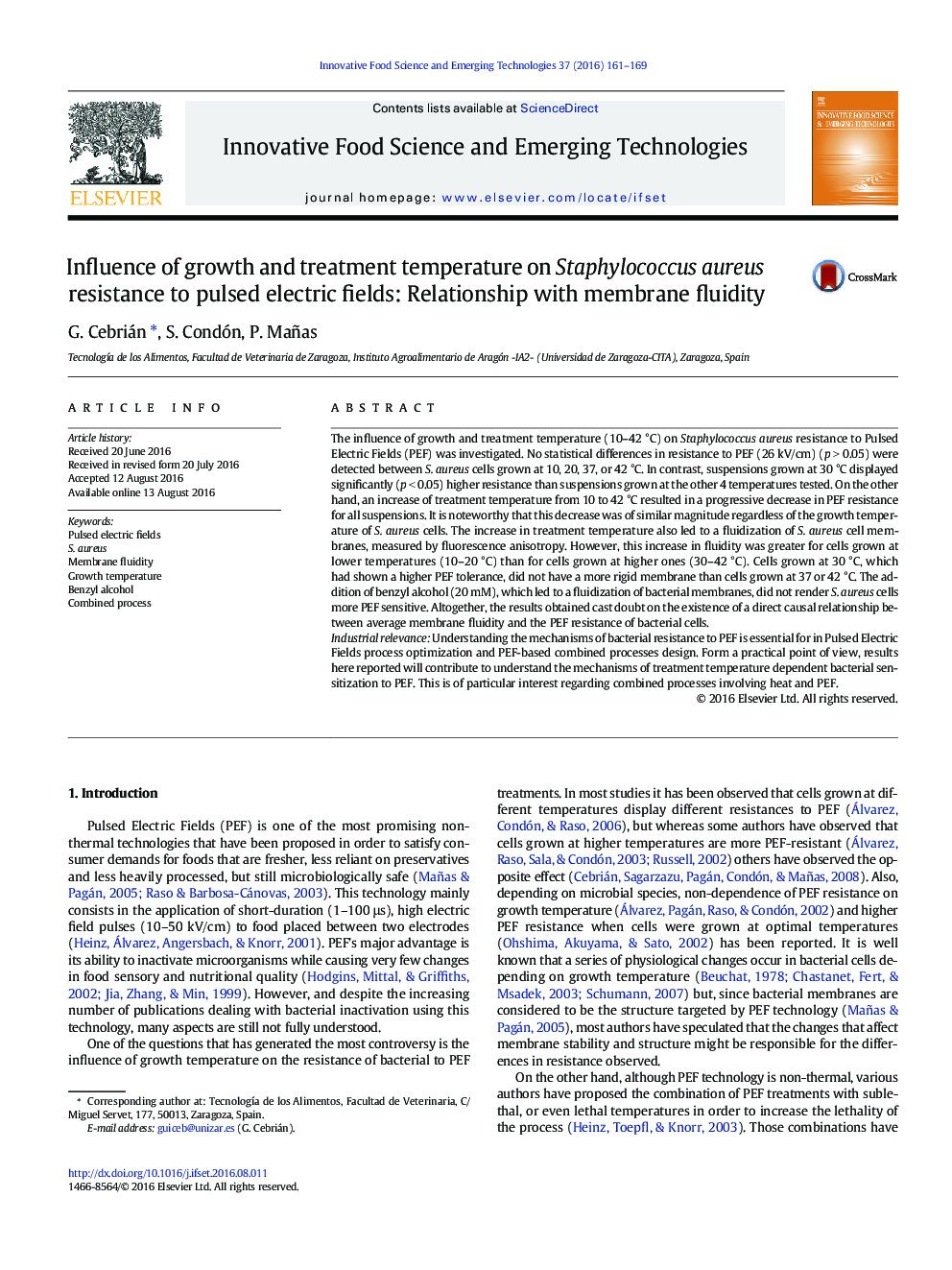| کد مقاله | کد نشریه | سال انتشار | مقاله انگلیسی | نسخه تمام متن |
|---|---|---|---|---|
| 2086242 | 1401281 | 2016 | 9 صفحه PDF | دانلود رایگان |
• S. aureus cells grown at 30 °C were the most PEF resistant (range studied: 10–42 °C).
• The higher PEF resistance of cells grown at 30 °C was not linked to a more rigid membrane.
• Raising treatment temperature increased PEF lethality, and also membrane fluidity.
• Benzyl alcohol fluidized bacterial membranes but did not sensitize cells to PEF.
• The existence of a relationship between membrane fluidity and PEF lethality is challenged.
The influence of growth and treatment temperature (10–42 °C) on Staphylococcus aureus resistance to Pulsed Electric Fields (PEF) was investigated. No statistical differences in resistance to PEF (26 kV/cm) (p > 0.05) were detected between S. aureus cells grown at 10, 20, 37, or 42 °C. In contrast, suspensions grown at 30 °C displayed significantly (p < 0.05) higher resistance than suspensions grown at the other 4 temperatures tested. On the other hand, an increase of treatment temperature from 10 to 42 °C resulted in a progressive decrease in PEF resistance for all suspensions. It is noteworthy that this decrease was of similar magnitude regardless of the growth temperature of S. aureus cells. The increase in treatment temperature also led to a fluidization of S. aureus cell membranes, measured by fluorescence anisotropy. However, this increase in fluidity was greater for cells grown at lower temperatures (10–20 °C) than for cells grown at higher ones (30–42 °C). Cells grown at 30 °C, which had shown a higher PEF tolerance, did not have a more rigid membrane than cells grown at 37 or 42 °C. The addition of benzyl alcohol (20 mM), which led to a fluidization of bacterial membranes, did not render S. aureus cells more PEF sensitive. Altogether, the results obtained cast doubt on the existence of a direct causal relationship between average membrane fluidity and the PEF resistance of bacterial cells.Industrial relevanceUnderstanding the mechanisms of bacterial resistance to PEF is essential for in Pulsed Electric Fields process optimization and PEF-based combined processes design. Form a practical point of view, results here reported will contribute to understand the mechanisms of treatment temperature dependent bacterial sensitization to PEF. This is of particular interest regarding combined processes involving heat and PEF.
Journal: Innovative Food Science & Emerging Technologies - Volume 37, Part A, October 2016, Pages 161–169
